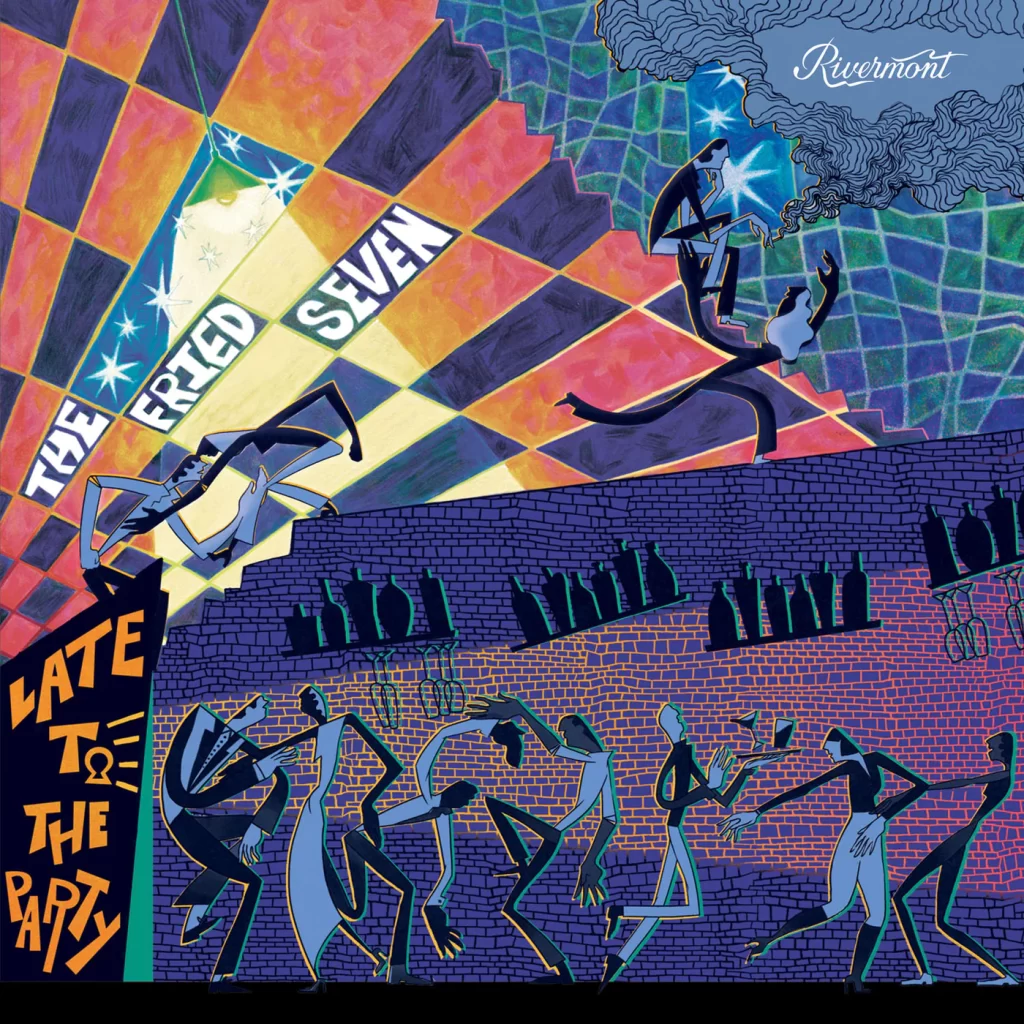 I have felt at times that certain studio releases lacked emotion, the bandleader perhaps concentrating too much on the details when given what they perceive as a “big break” to record with a proper label. This album is the opposite, this group of young Europeans given a chance to reach an American audience with Rivermont Records hit a home run.
I have felt at times that certain studio releases lacked emotion, the bandleader perhaps concentrating too much on the details when given what they perceive as a “big break” to record with a proper label. This album is the opposite, this group of young Europeans given a chance to reach an American audience with Rivermont Records hit a home run.
The American readers of TST may never read about these guys again, but you can now own the best of the European hot jazz scene on CD or LP without international shipping. You may find a few European musicians who find their way to an American jazz party, but the days of festivals importing whole bands for a weekend are long gone. That’s too bad because The Fried Seven would shake up the circuit. Hot ensemble jazz is exactly what is on offer here.
Their sound is fun hot jazz that, while it may not go all the way to the wild wood blocks horse noises sound of the ODJB, it gets mighty close while having plenty of love for an early jazz sound that incorporates 80 years of revival. There are moments to thrill the 90 year old man in the corner and the 16 year old cornetist with Bix on the brain.
The band consists of seven guys, the oldest looking to be barely in his 30s. They are joined by vocalist Laura Dooge, who leads her own jazz band performing in the Dutch language. She does a perfect mid Atlantic accent (Grandma’s phone voice), she could do films set in the ’30s to ’50s as an American better than most American actresses. I appreciated accented and foreign language singing so I looked at her Dutch band and amazingly she has the same beautiful American sounding voice singing in Dutch. She only appears on two titles here but they stand out and I get the impression she joins them more often live.
The band includes Pablo Castillo (cornet), Matteo Paggi (trombone), Marti Mitjavila (tenor sax and clarinet), Pepijn Mouwen (alto sax, clarinet, and arrangements), Cem Karayalcin (guitar, banjo), Simon Osuna (string bass), and Carlos Ayuso (drums). They hail from Spain, Italy, and the Netherlands and met while at music school in the Netherlands not so long ago. When their teacher had the class memorize Louis Armstrong’s solos, the friends decided they liked the old stuff so much they would jam it together privately. Slowly they explored the classics and built a repertoire. Eventually the gigs started coming. They have played a number of European festivals, have a following for well concieved YouTube videos, and regular play shows at venues across the Netherlands.
The marvel is that they were not simply shown Hot Five recordings in a passing fashion but made to recreate them. If more jazz programs treated early jazz as music worth playing rather than archaic precursors to bop we would have many more bands spinning out of music schools like this.
Throughout the album the arrangements are great, and the intentionality behind every title is clear in the track by track liner notes. The concentration is on ensemble play in the New Orleans style, even where a title dips into the ’30s. That feeling isn’t lost even when someone does take an extended lead. The notes mention how learning to play together like that proved a creative challenge their prior training had not prepared them for, they had to find the path back while sharing their musical discovers and diligently practicing as a group. I do not mean to give the impression that these are kids, they were all fine jazz musicians even on meeting. They are pros, just early in careers. And for formally trained jazzmen in 2024 the pursuit of early jazz is a defiant archeology and involves shedding more modern playing habits.
The dozen track album kicks off with a high energy “Deep Henderson” featuring a slap tenor sound, and plenty of oomph and rhythm. There is a lot of feeling in the excellent arrangement of “I Knew You When.” Building slowly to a powerful end with the percussion used masterfully. I don’t hear cymbals played that way often on albums I review, it works perfectly here. Carlos Ayuso goes even harder on the cymbals on “Sugar Foot Stomp,” using a homemade set of hand cymbals, apparently a “craze” in 1928. Their creation was guided by the jazz drumming historian Nicholas D. Ball. “Duke’s Tiger Rag” is based on Ellington’s 1929 version, and again the percussion gets me. It’s that early kit sound used with great expressiveness.
The two reed, trombone, and cornet front line makes for a very full rolling ensemble sound full of interest. The Guitar and bass keep great rhythm, without showing off, I particularly like that guitar. The drums take the absent piano’s role, filling the rhythm while providing some extra show when the front line takes a breather.
The album notes apologize for recording errors resulting from the vintage equipment utilized by the band, this won’t be noticeable off of quality headphones and I attribute the warning to Rivermont’s high standards. Many bands use vintage recording equipment with far more notable impact than heard here. I am happy as a clam to see Rivermont offering this album and highlighting parts of the jazz world normally out of mind to American listeners. If The Fried Seven are any indication the European scene is thriving.
The Fried Seven
Late To The Party
rivermontrecords.com
thefriedseven.com
Joe Bebco is the Associate Editor of The Syncopated Times and Webmaster of SyncopatedTimes.com





















